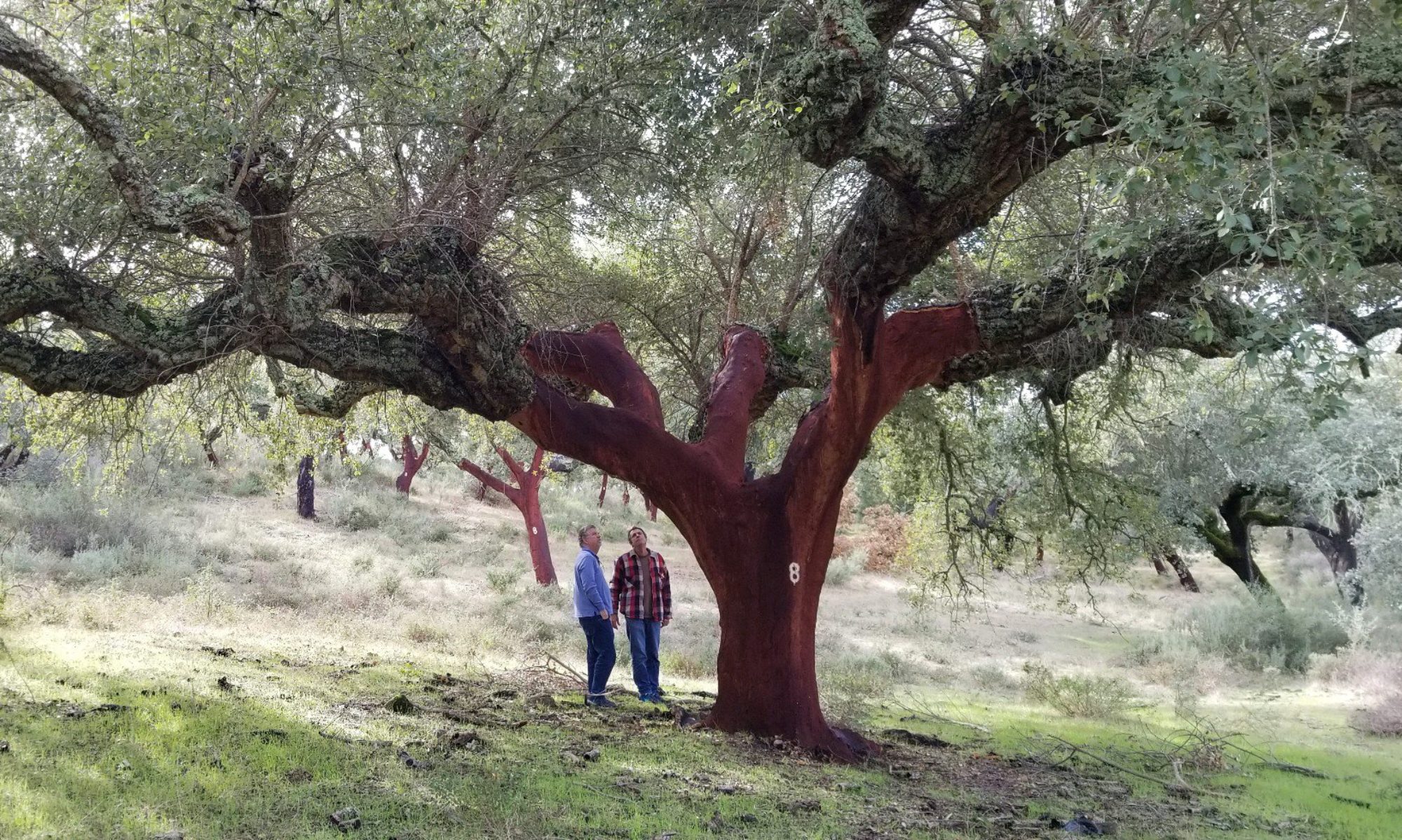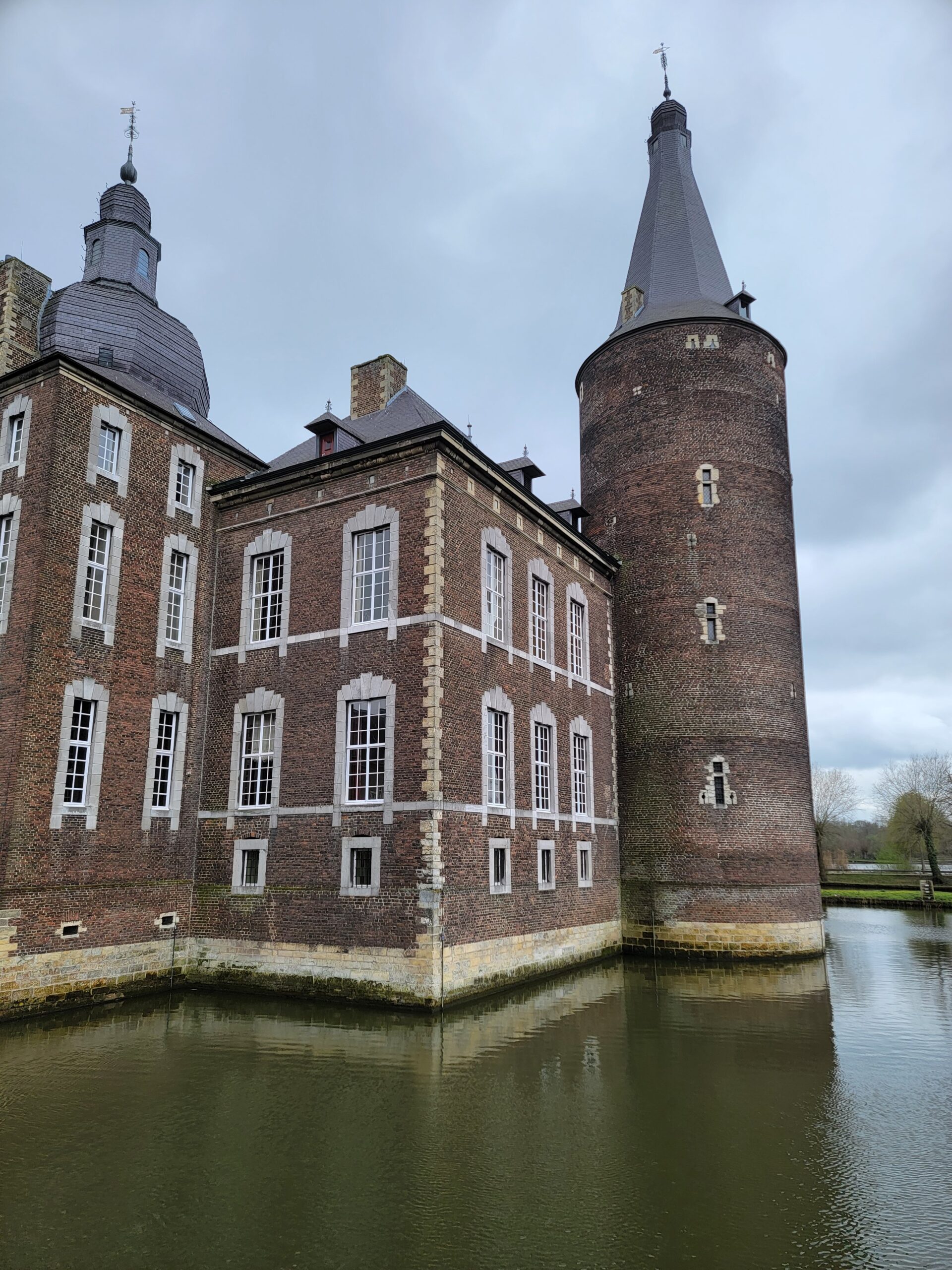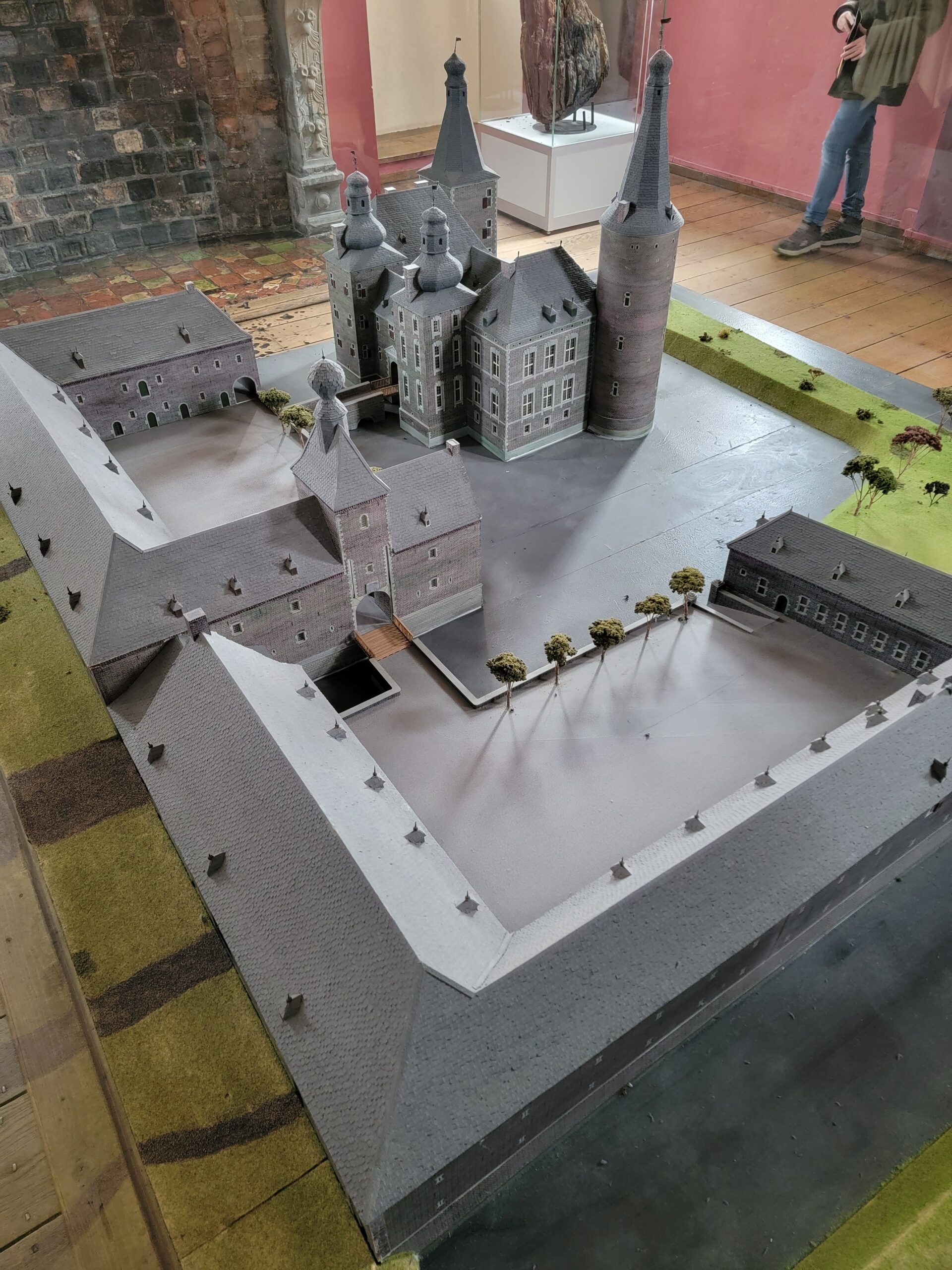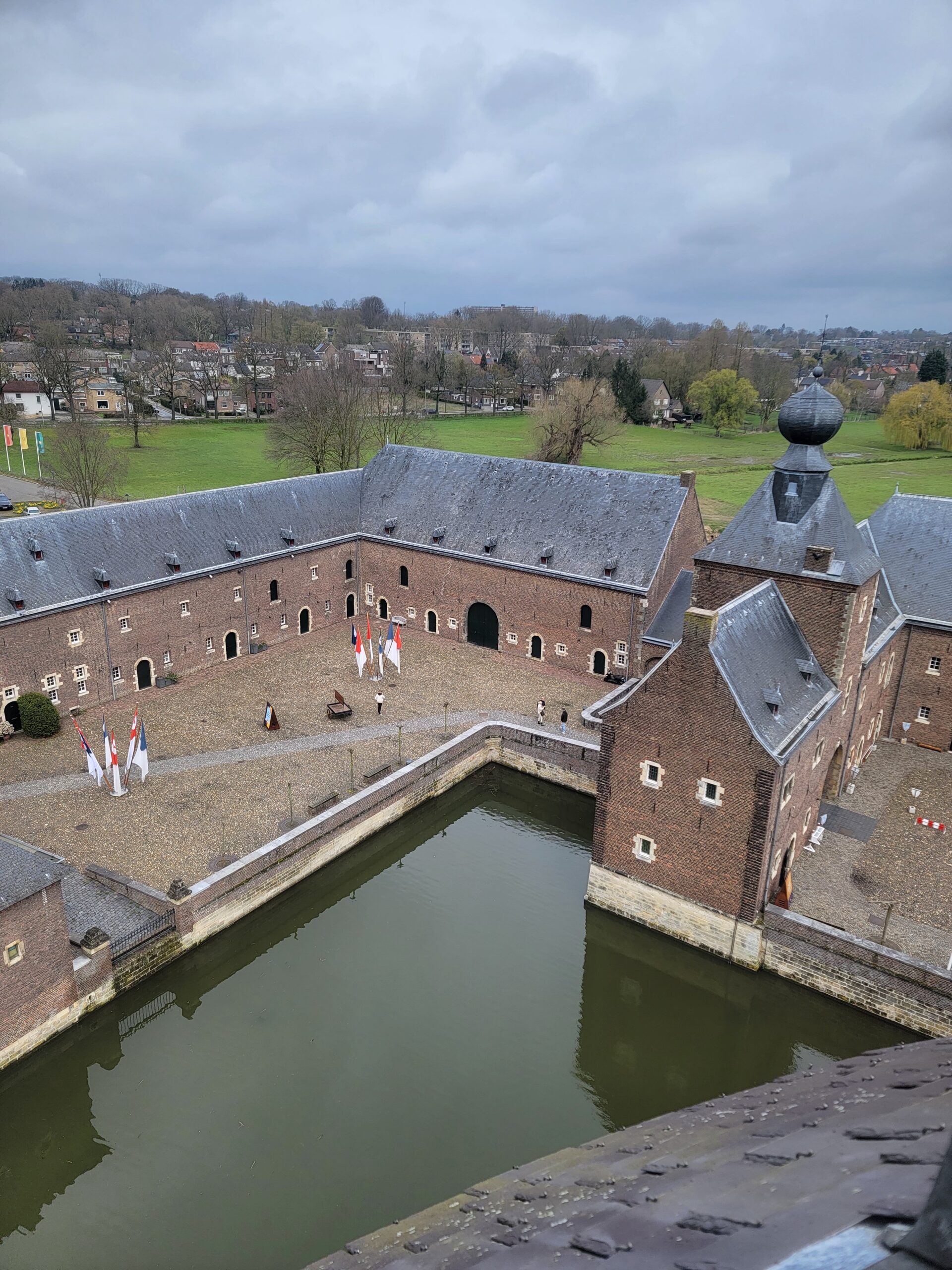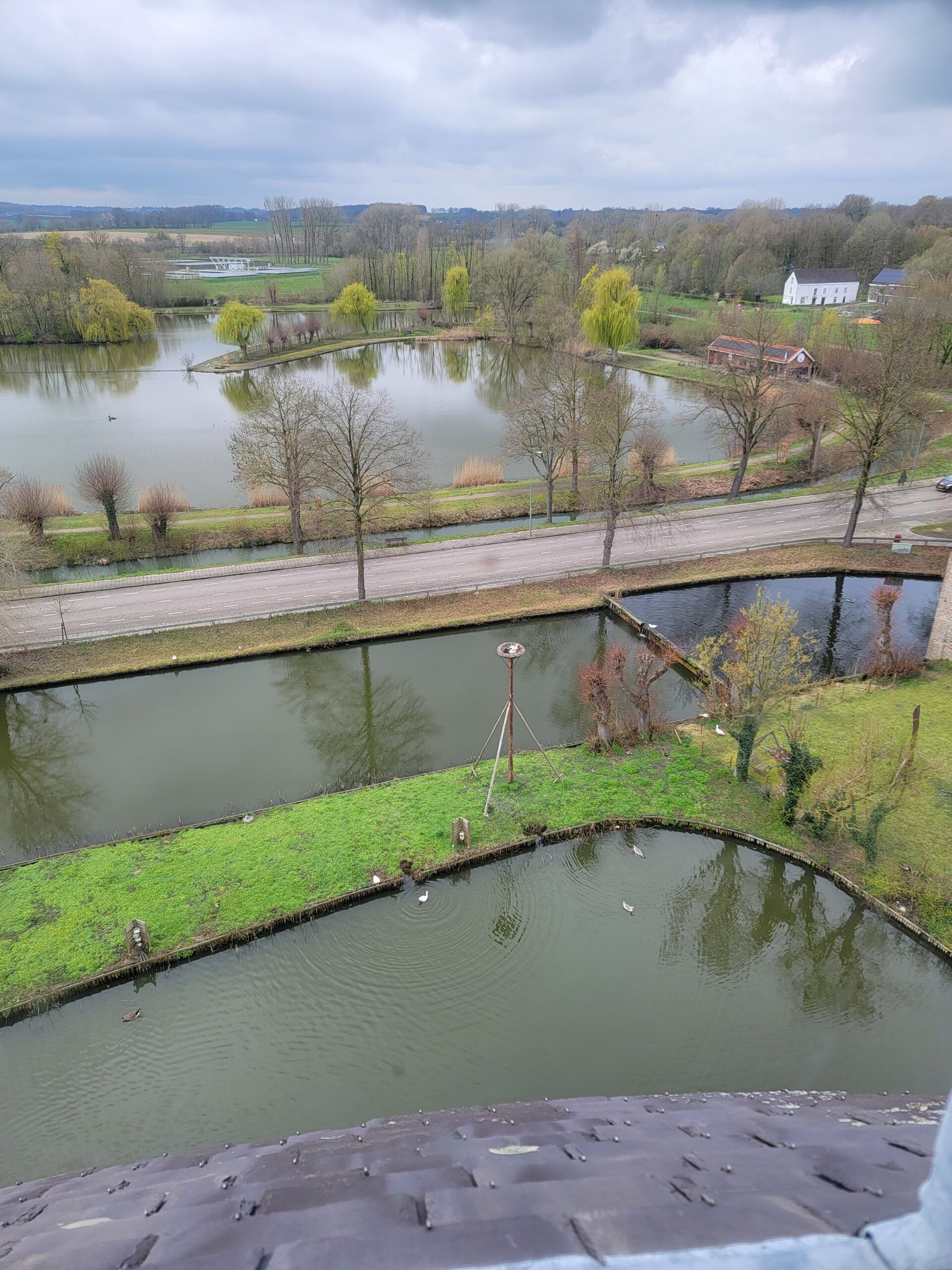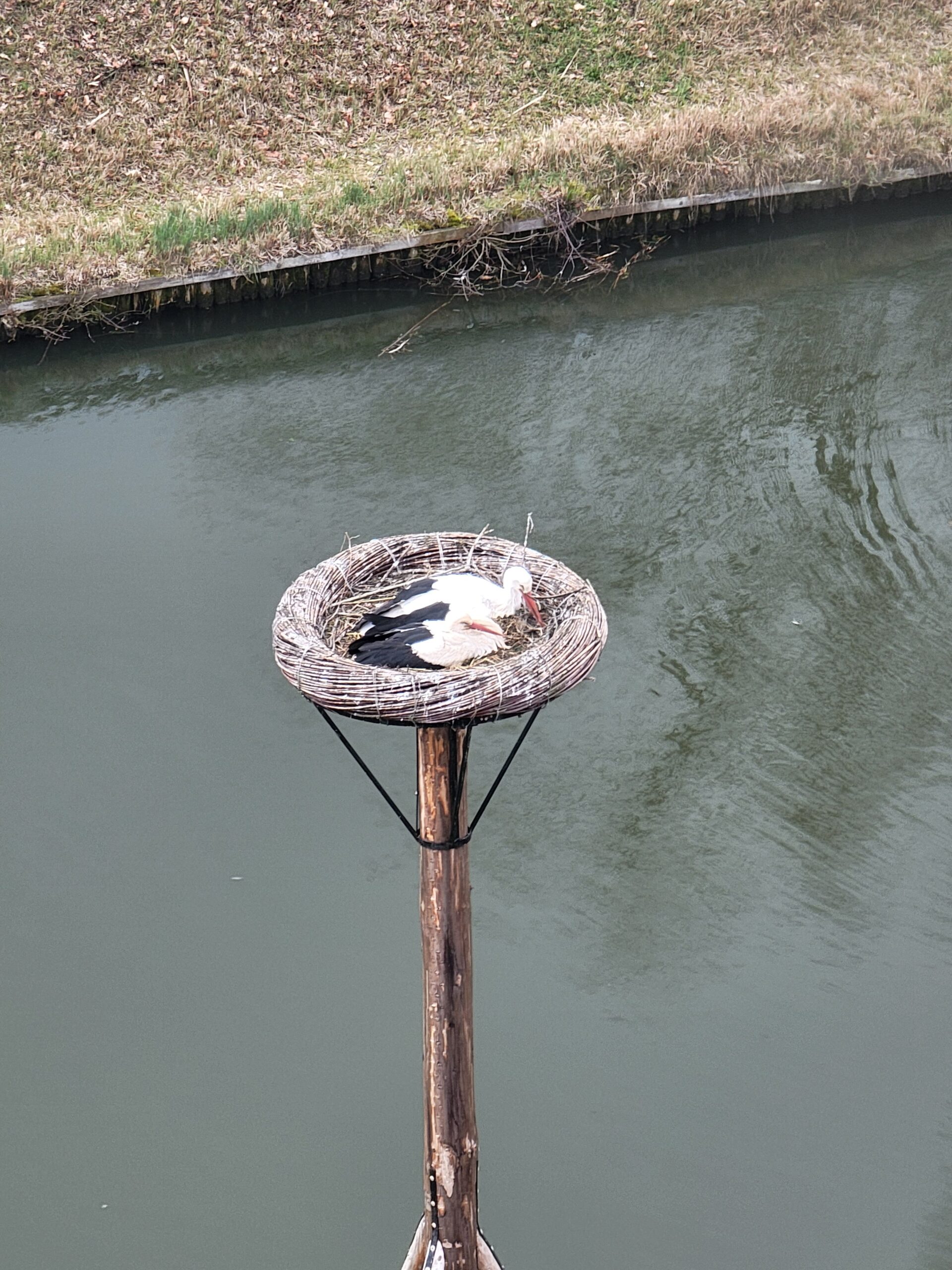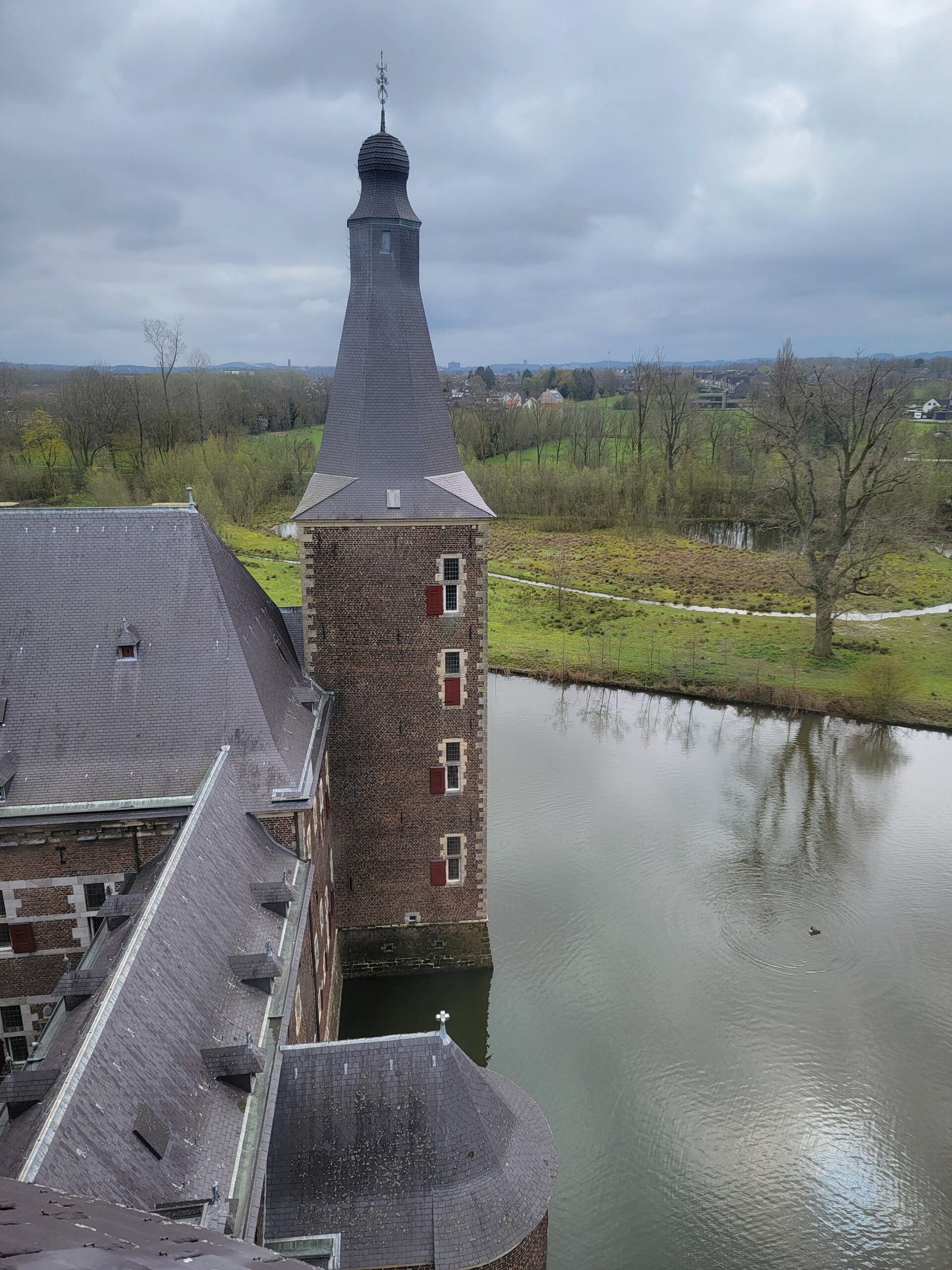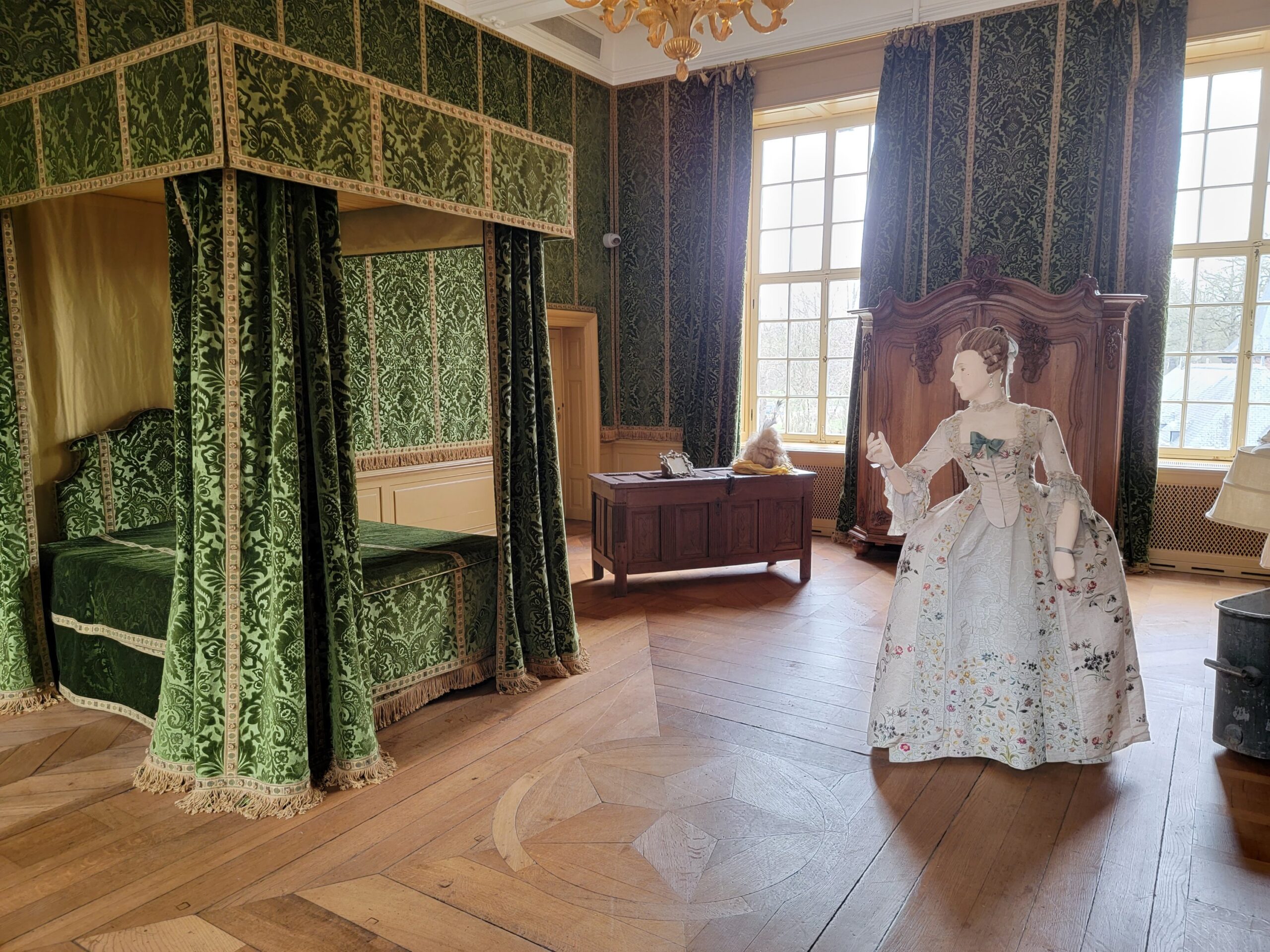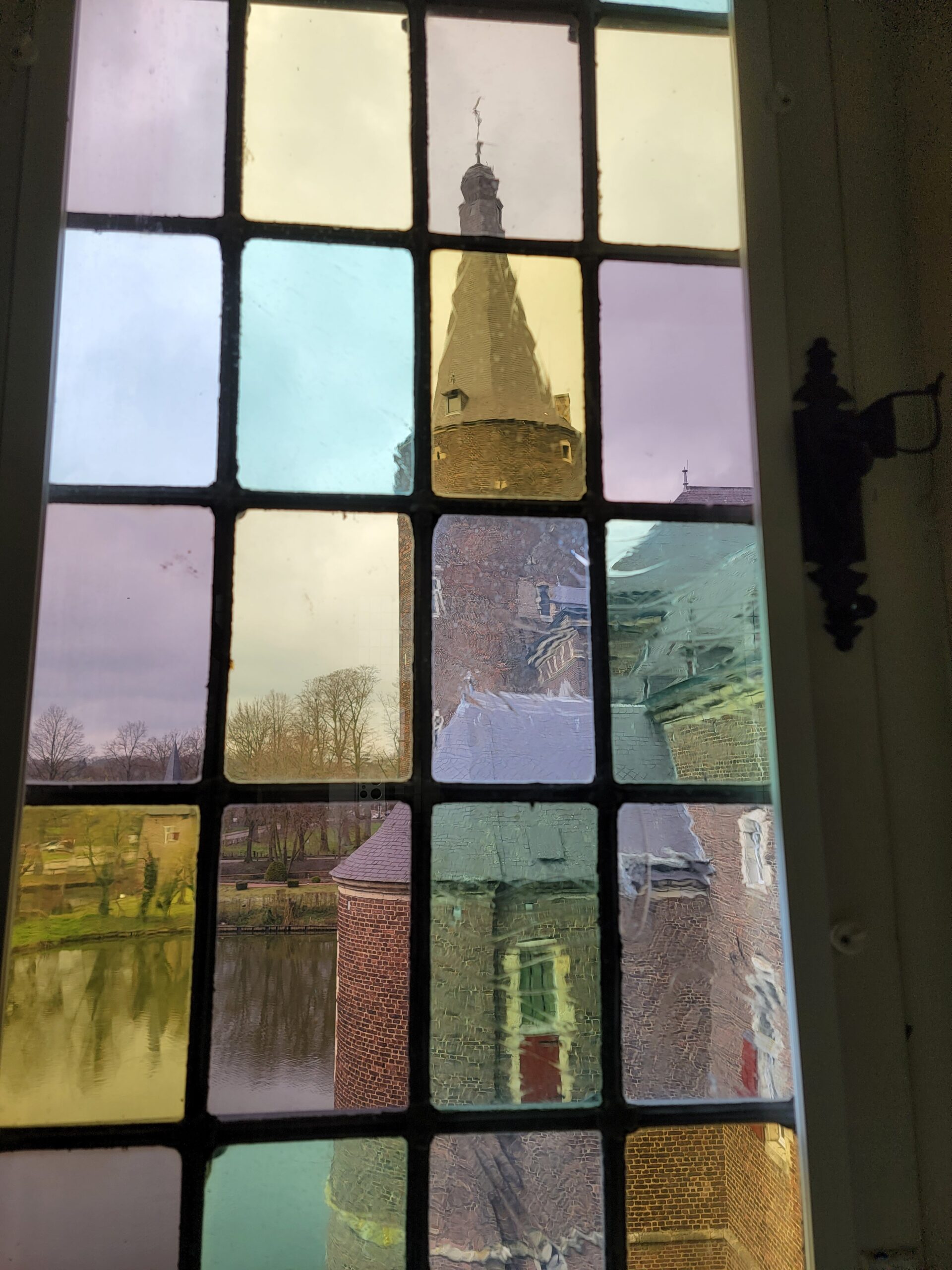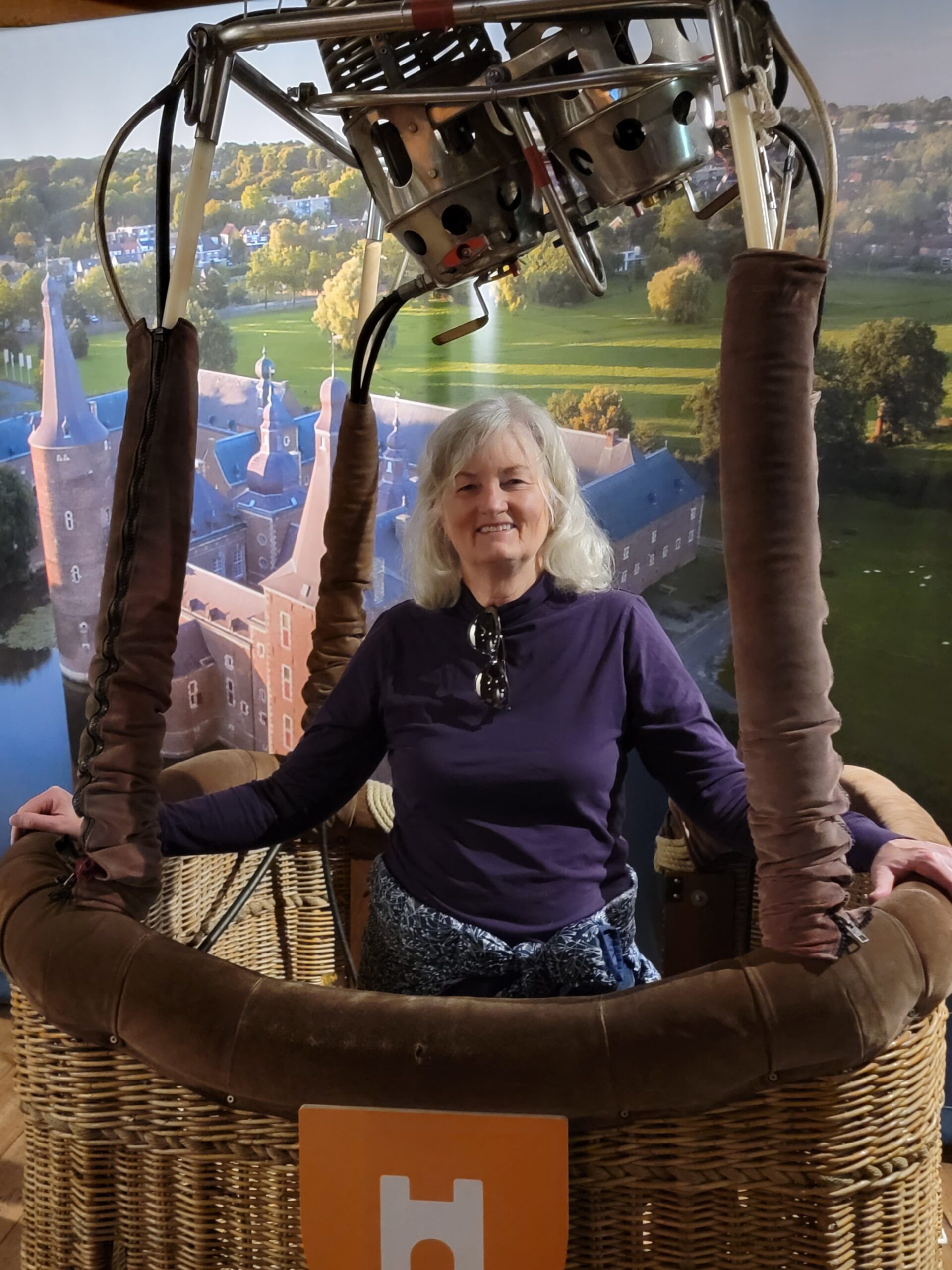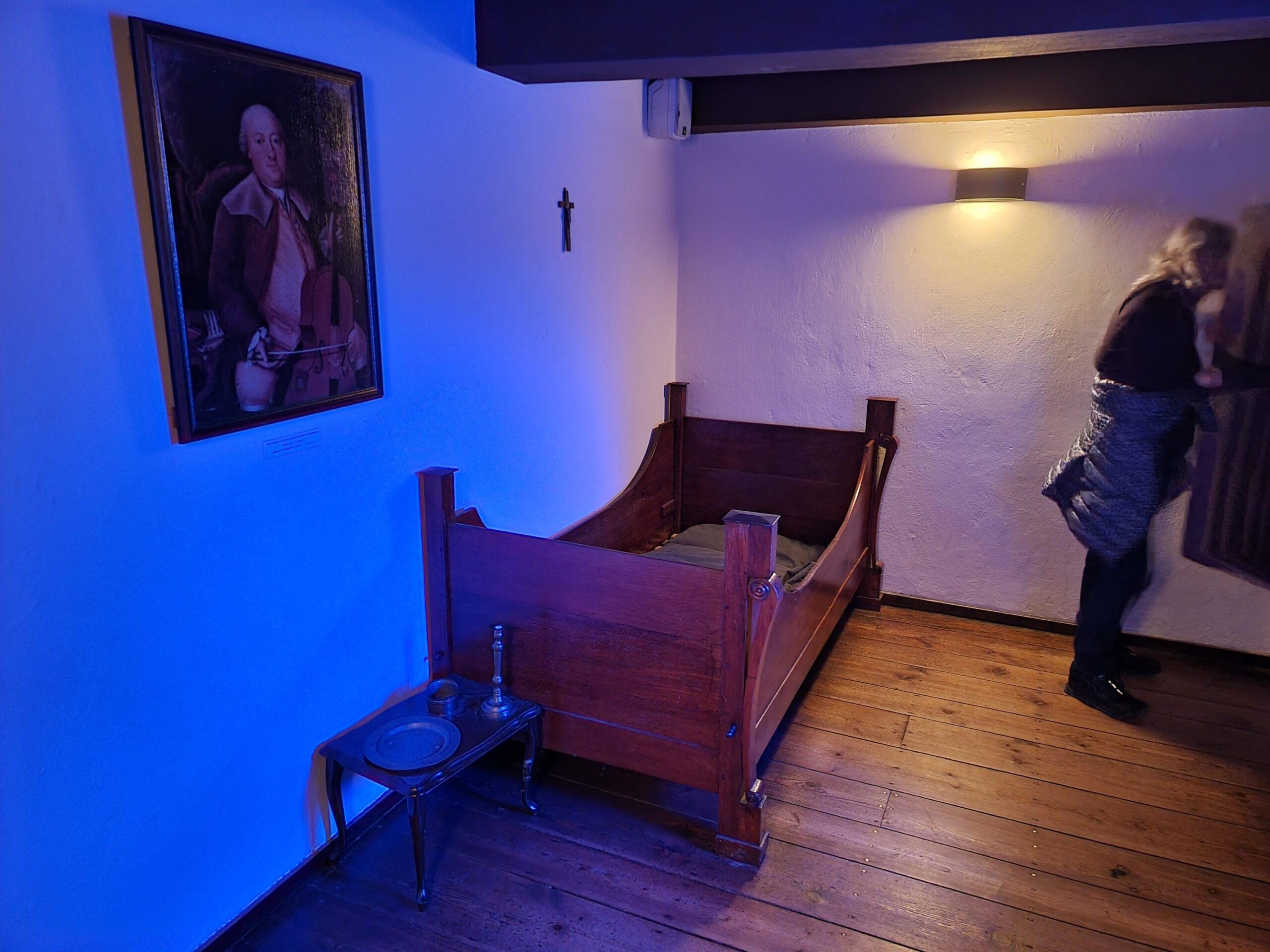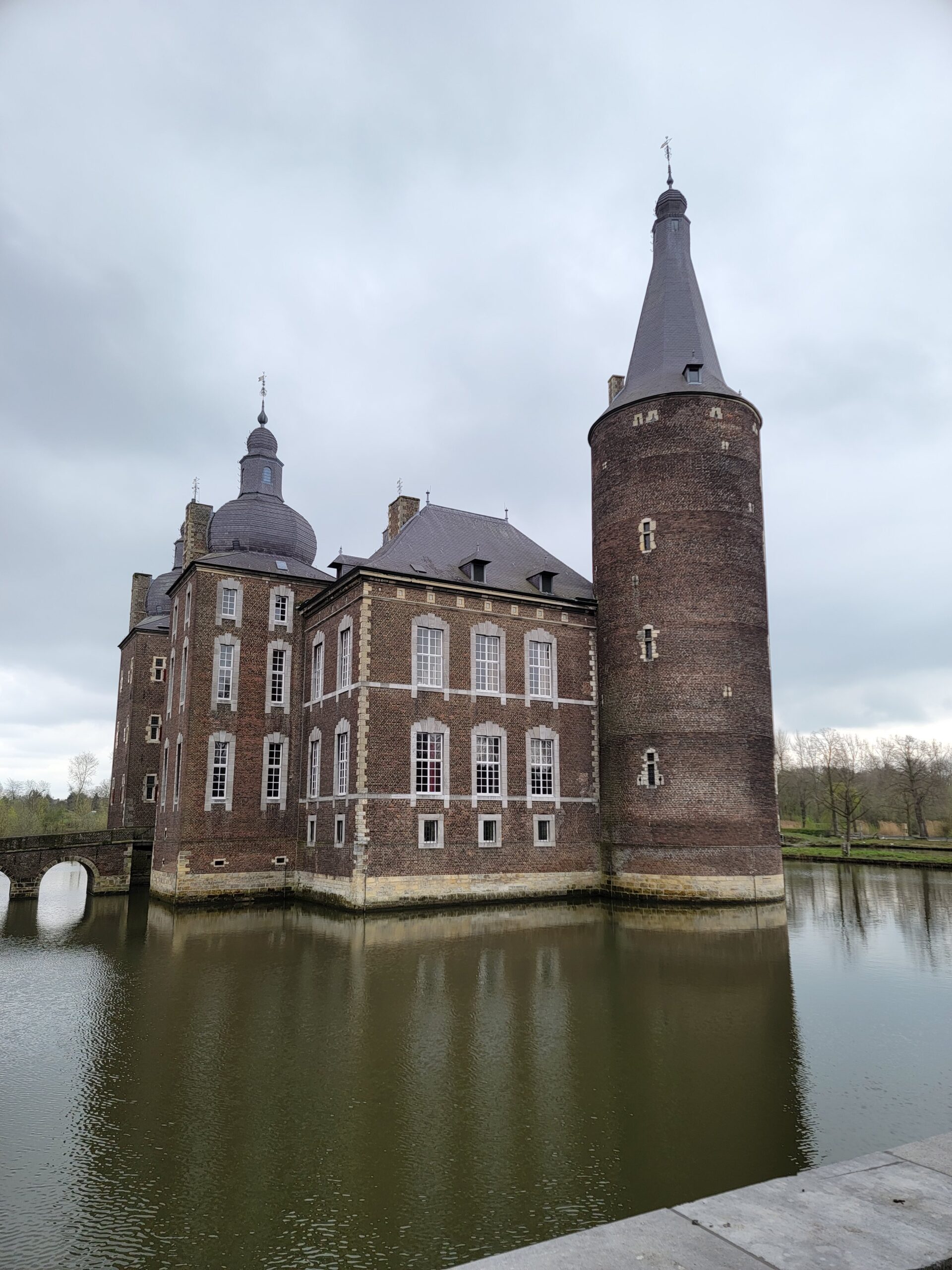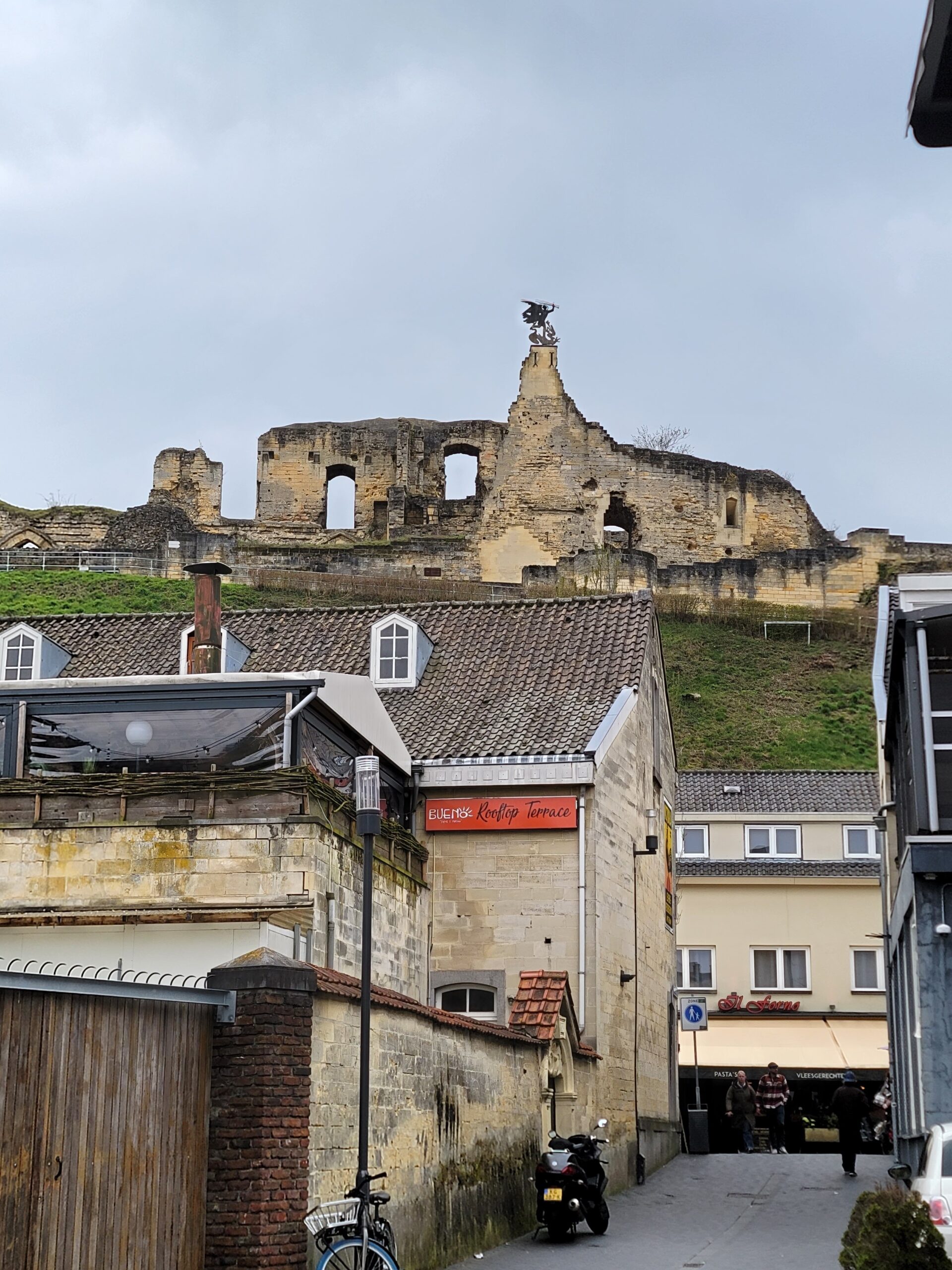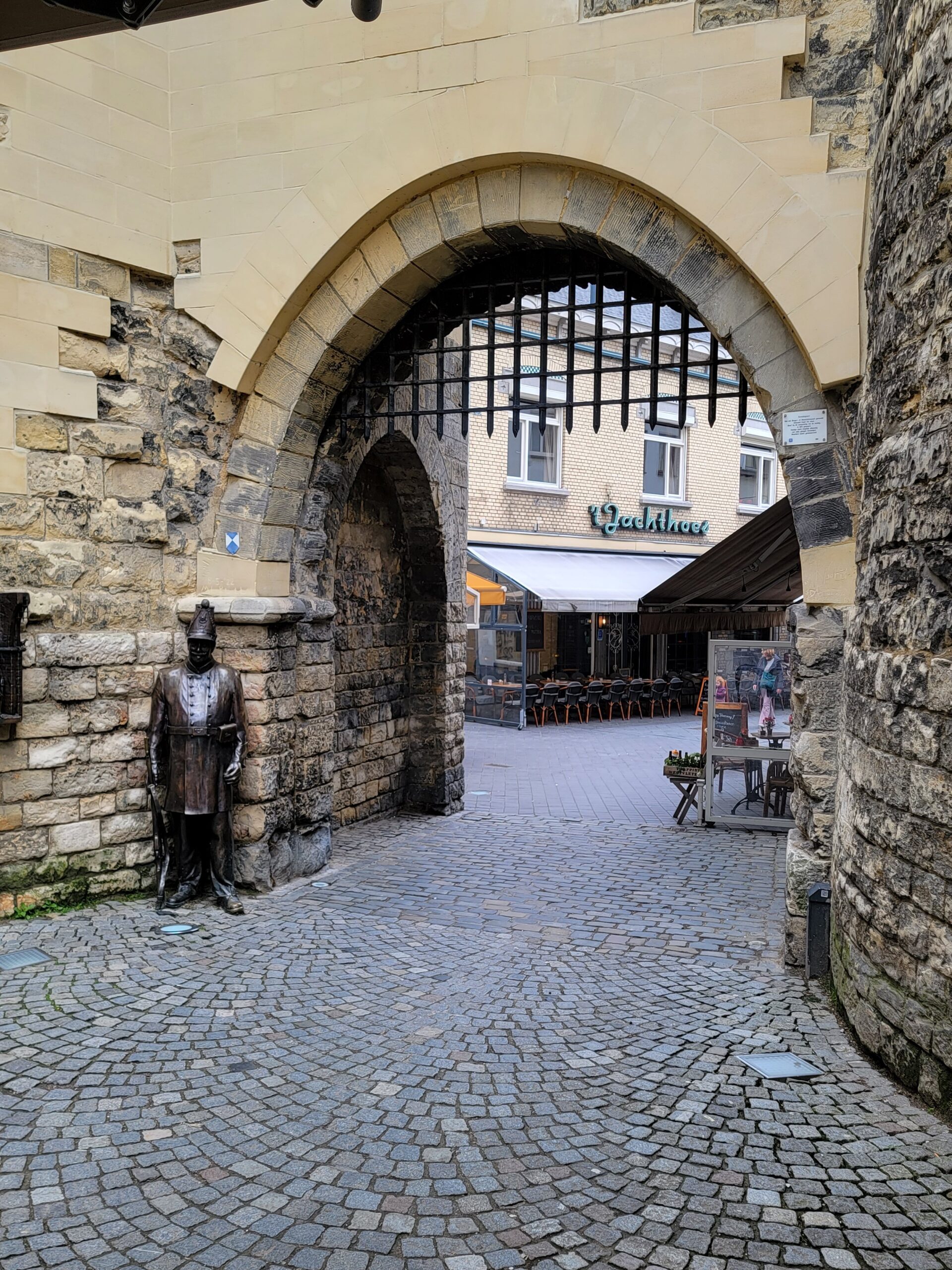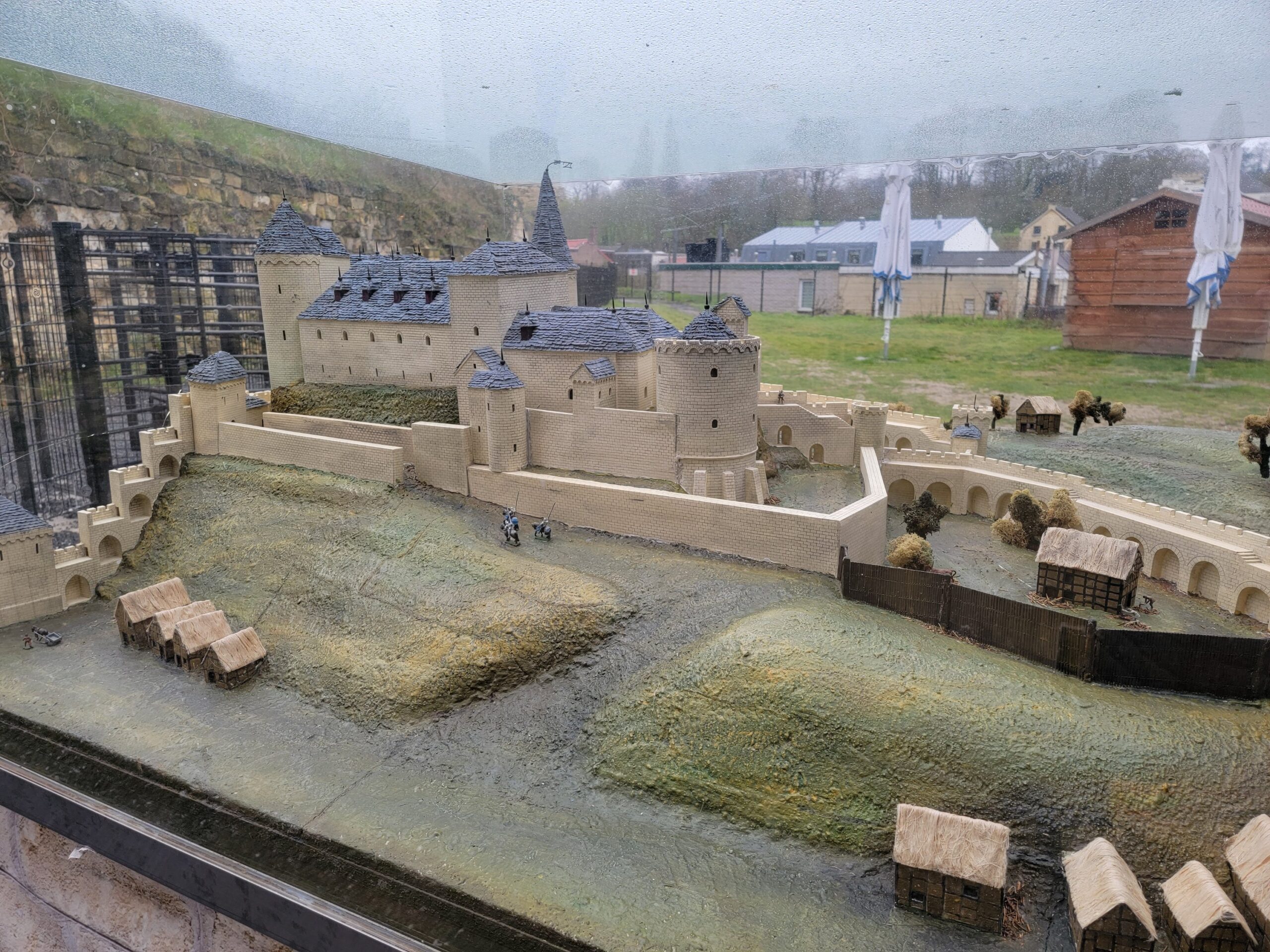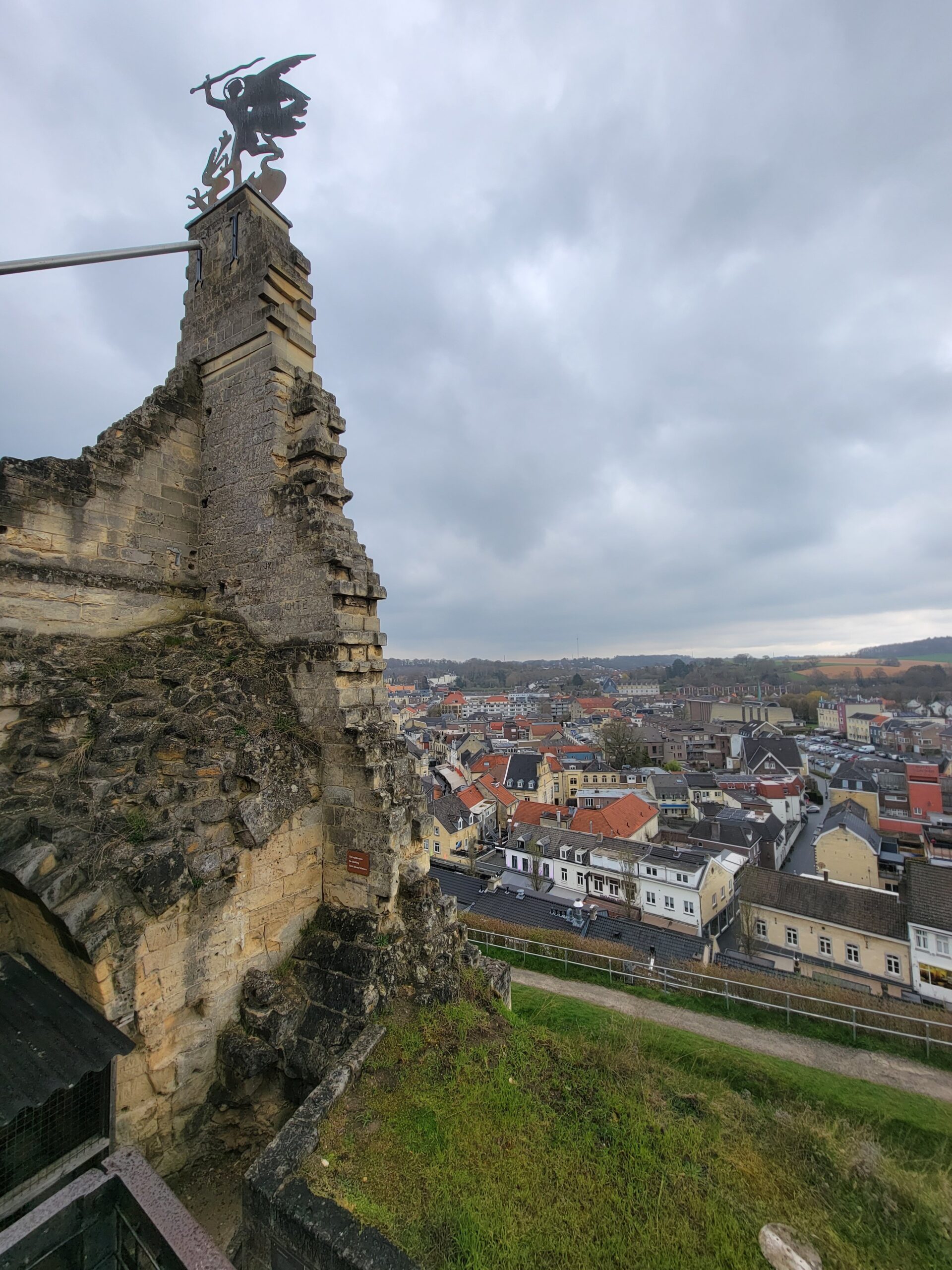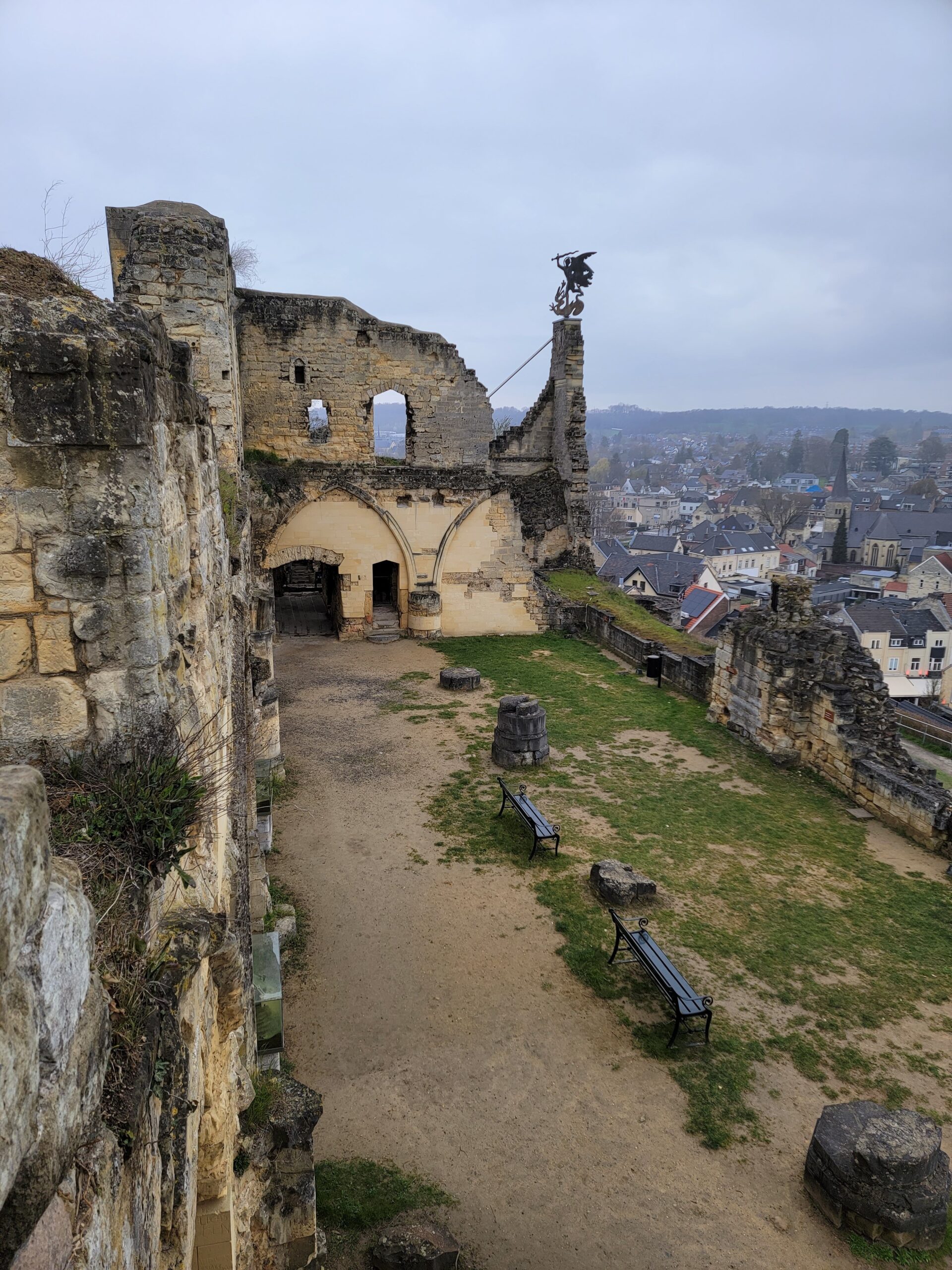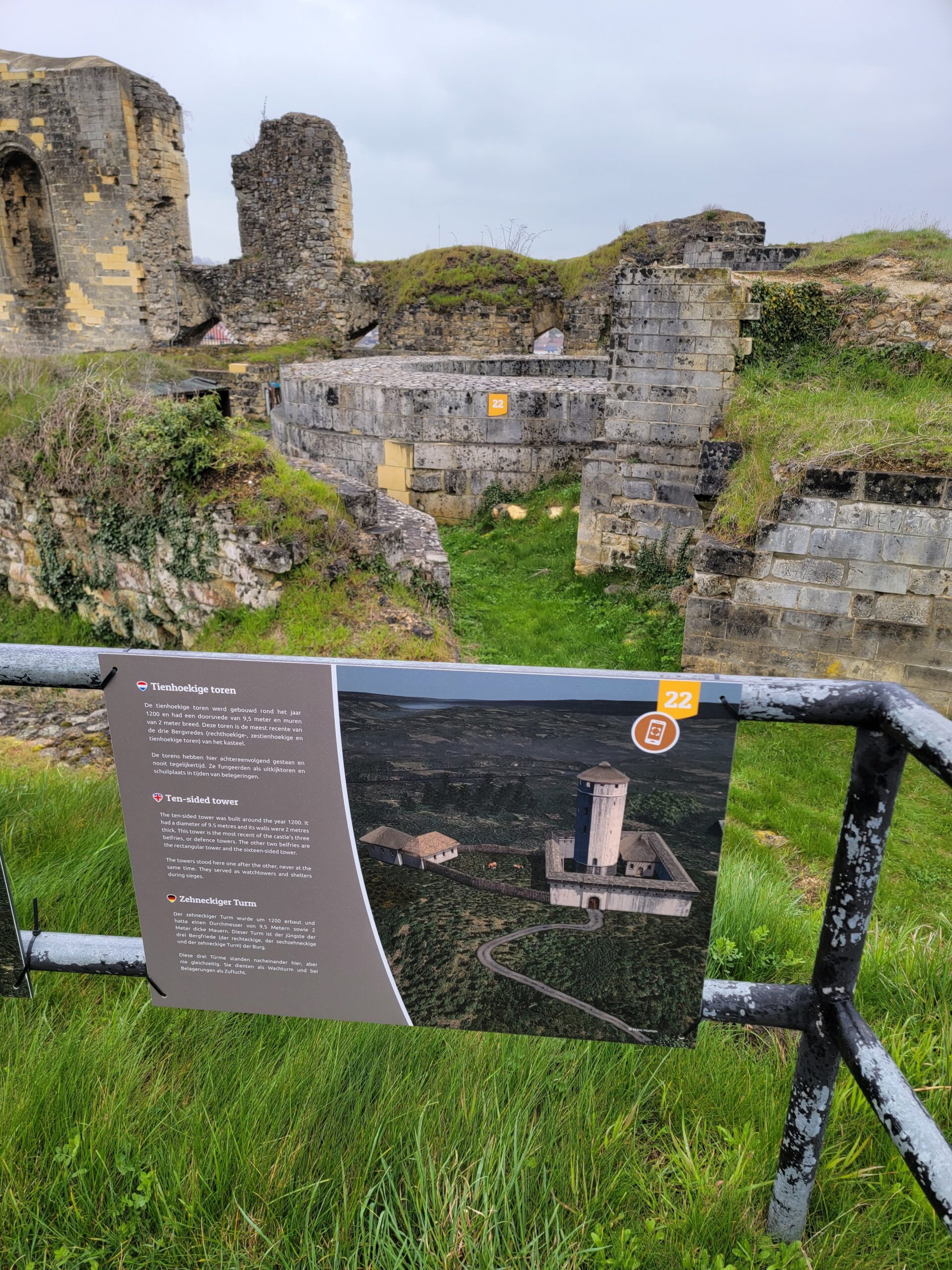We took another day trip from Maastricht to visit Hoensbroek Castle. Due to it’s important strategic location between Maastricht, Aachen and Cologne, a castle has been located on this site since 1225.
This castle was built in stages over several hundred years. The oldest parts of the castle date from around 1360. The round tower in the above photo was added in 1425. This castle was the home to Sir Herman Hoen, who was the Lord of the area. His family eventually changed their name to Van Hoensbroek, because nobody likes a last name with just one syllable. Am I right?
As with seemingly all castles in the Netherlands, they have a scale model you can view.
Here is the view from the attic of the round tower. You definitely want to watch your head in this section! This is where the lookouts were stationed back when you had to worry about bad folks, like Vikings and politicians. Unfortunately we still have politicians!
There is a White Stork’s nest in the above photo. Here it is zoomed in. They have these man-made nests all over the Netherlands. We also saw some in Belgium. They build these for two reasons. One, much of their natural habitat is being curtailed by humanity, and two, if they don’t build these, the storks tend to build there nests at the top of utility poles, which can apparently cause electrical issues. Shocking, I know!
This is a view of a tower that was built in the second half of the 17th century.
This is called the Green Room, as the green four-poster bed has been here since the 18th century.
I liked the view of the round tower through this stained glass window.
Here’s Kim in a mock-up of a hot air balloon over the castle. Wish they had offered actual hot air balloon rides!
Below is a photo of the castles “Secret Room”. This rooms entrance was hidden by a cupboard, so somebody could hide in case of an intrusion into the castle. This room has a pretty cool story. During the French Revolution, all the nobles were persecuted…for being nobles. Sir Hoesbroek’s brother, Philip Damiaan Van Hoesbroek, was the bishop of Roermond (Netherlands) and was therefore subject to arrest.
He came to hide in his brothers castle, and ended up in the Secret Room. The French soldiers trying to track him down knew he was hiding in the castle, and searched the entire premises without success. They realized every room in the castle has a window, so they instructed the staff to put a candle in the window of each room and circled the castle after dark looking for a hidden room. Philip was made aware of this plan and put his own candle in the window. This worked, and the French soldiers never found him, which just goes to show it’s easy to fool the French.
One of the unusual spots in the castle was this, the “kotsgat”, where the lovely rich folks who lived here would decide to vomit after eating too much, so they could start eating all over again. The hole leads directly to the swimming pool….err….moat.
With this sort of lifestyle, maybe the French should have found his brother after all??
One last shot of the castle as a palate cleanser. I’m sure the moat is much cleaner these days. Bear in mind the castle has a dozen “privies”, toilets which actually hang on the outside of the castle and dump directly into the moat below. Suffice it to say this was not a spot you wanted to take a swim. Ok, guess that wasn’t much of a “palate cleanser” after all.
We then drove to Valkenburg to check out the ruins of Valkenburg Castle. It was a castle kind of day!
On the way towards the castle we passed by one of the Valkenburg city gates.
At the entrance to the ruins is…you guessed it…a scale model of the castle! This one depicts what the castle looked like at it’s prime in the 14th century.
The best views of the city are from the castle ruins. This was the only castle in the Netherlands to be built on a hill, but that’s not surprising, since there are so few hills here.
Look, in the background, another hill! The castle was pretty much destroyed by the Spanish in the early 17th century during the 80 years war. There were plans to rebuild it, but during the French invasion in 1672 the Dutch destroyed it themselves rather than have it fall into French hands. I’m thinking the Dutch and the French didn’t like each other very much?
There are signs throughout the area indicating what portions of the castle were built when, and they were actually in English. They definitely weren’t in French!
Next up, we head to Otterlo, directly adjacent to National Park De Veluwe, and some excellent WWII sites.
